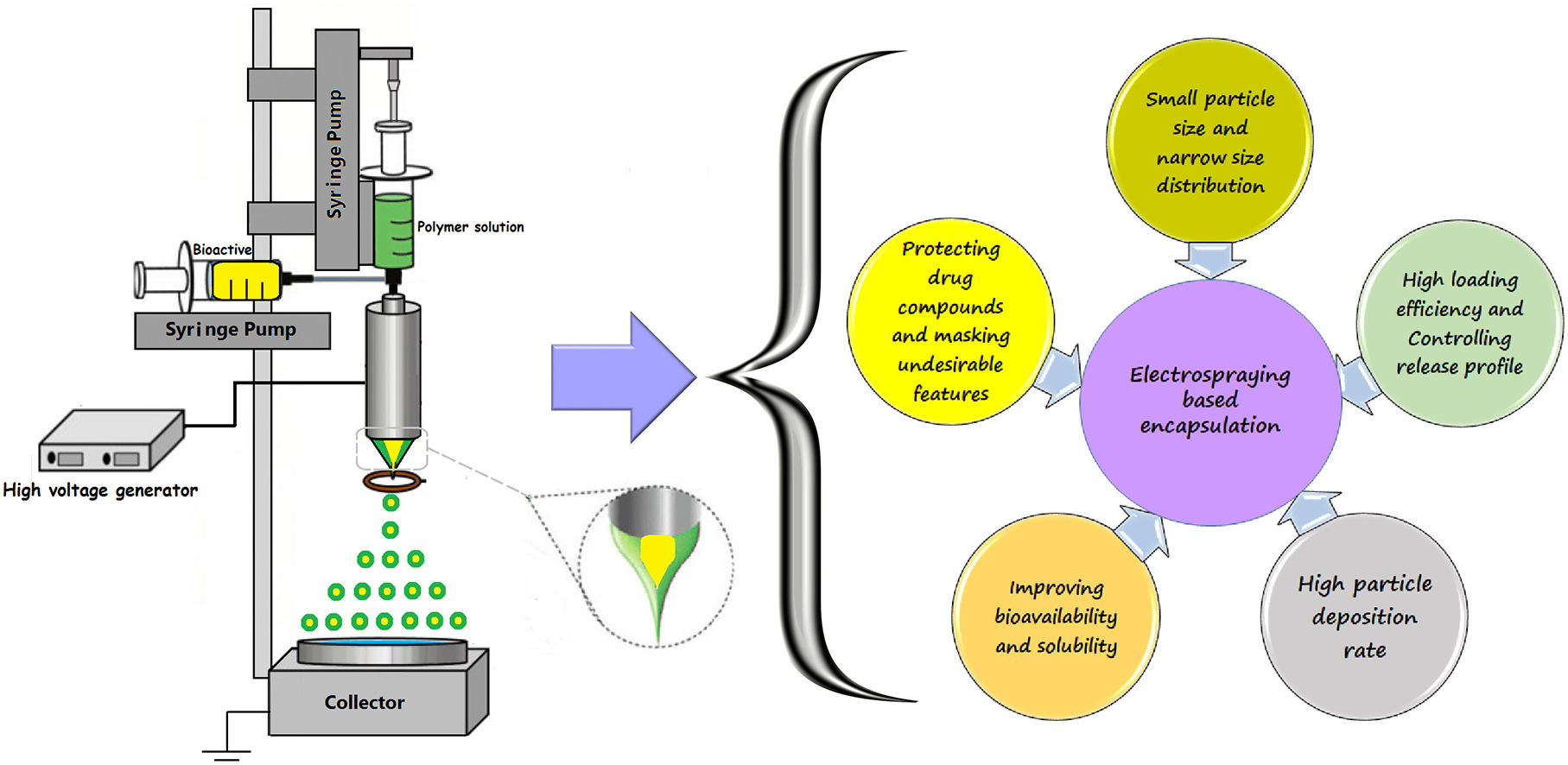Electrospraying as a novel method of particle engineering for drug delivery vehicles

Encapsulation technologies can be used to preserve therapeutic and bioactive compounds from harsh conditions (e.g., light, moisture, and oxygen) and biological destruction (enzymes, metabolism, and phagocytosis). Encapsulation involves the incorporation of the active moieties into a shell structure (e.g., protein, polysaccharide or lipid-based material). These techniques can improve the physicochemical properties of the encapsulated compounds, provide sustained release to specific organs, “cover up” undesirable properties, and improve their solubility, dispersion, and bioavailability. Different techniques have been applied to encapsulate drug compounds, including emulsification, inclusion complexation, nanoparticulate systems (solid lipid nanoparticles and nanostructured lipid carriers), liposome entrapment, nanoprecipitation, freeze drying, spray drying, etc.
However, high temperatures or toxic solvents are used in some of these techniques such as spray drying, and liposome entrapment can degrade the bioactive compounds or reduce their functionality. Electrohydrodynamic spraying (electrospraying) is a versatile tool for liquid atomization by means of electrical forces. This technique is simple and easily controllable without any harsh conditions and could be a promising alternative method to encapsulate sensitive compounds. By optimizing the process variables e.g., properties of polymer solutions (type, viscosity, conductivity), solvent type, process parameters (applied voltage between the needle tip and the collector surface, applied flow rate, distance between the needle tip and the collector, ambient temperature, and relative humidity) this technique can be effectively used for micro- and nanoencapsulation of drug compounds.
This article reviews the effects of electrospraying parameters in production of monodisperse particles with well-controlled shapes and high encapsulation efficiency. It also, summarizes the latest reports of encapsulation of therapeutic compounds, and critically discusses the limitations and future perspectives of this technique.
Author links open overlay panelAli Tanhaei, Maryam Mohammadi, Hamed Hamishehkar, Michael R.Hamblin
Journal of Controlled Release
Available online 31 October 2020
https://doi.org/10.1016/j.jconrel.2020.10.059

